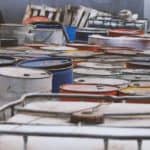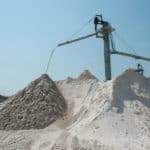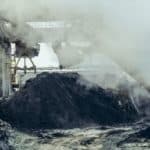Industrial Hygiene Assessment Services
INSIGHT INTO INDUSTRIAL HYGIENE ASSESSMENT SERVICES
The American Board of Industrial Hygiene (ABIH) defines industrial hygiene as, “Industrial hygiene is the science of protecting and enhancing the health and safety of people at work and in their communities. Health and safety hazards cover a wide range of chemical, physical, biological and ergonomic stressors. Those dedicated to anticipating, recognizing, evaluating and controlling those hazards are known as Industrial Hygienists. They are professionals dedicated to the well-being of people – at work, at home and in the community.”
Most typically, industrial hygiene sampling affords the following benefits:
OSHA Compliance
Occupational Safety and Health Administration (OSHA) Compliance – Employee complaints (or just random inspections) can result in an OSHA officer visiting your facility. OSHA requires in 1910.1000 that, “an employee’s exposure to any substance listed in Tables Z-1, Z-2, or Z-3 of this section shall be limited in accordance with the requirements of the following paragraphs of this section” OSHA has established permissible exposure limits (PELs) for a number of chemical constituents, shown in the below Z-tables:
1910.1000 TABLE Z-1 – TABLE Z-1 Limits for Air Contaminants.
1910.1000 TABLE Z-2 – TABLE Z-2
1910.1000 TABLE Z-3 – TABLE Z-3 Mineral Dusts
OSHA has also developed chemical-specific standards that set numerous requirements to ensure the protection of employees. These standards often require a baseline determination and (depending on the concentrations) periodic monitoring (quarterly or semi-annually). Links to the applicable standards are summarized at the Insight OSHA Standards page
Beyond OSHA – ACGIH, AIHA, NIOSH, DFG
As shown in the above links, OSHA regulates several hundred chemical compounds. However, most of these limits haven’t been updated since their inception in 1970, and very few new limits have been created. The Toxic Substances Control Act (TSCA) includes roughly 84,000 chemicals. EPA considers roughly 7,700 chemicals to be produced in “significant amounts”. This is a far cry from the 500 or so regulated by OSHA!
As such, often in industrial hygiene we will reference limits from other organizations:
American Conference of Governmental Industrial Hygienists (ACGIH) Threshold Limit Values (TLVs)
American Industrial Hygiene Association (AIHA) Workplace Environmental Exposure Limits (WEELs)
National Institute of Occupational Safety and Health (NIOSH) Recommended Exposure Limit (REL)
German Research Foundation (DFG) Maximum Allowable Concentrations (MAK)
Per the ACGIH, “Threshold Limit Values (TLVs®) determinations are made by a voluntary body of independent knowledgeable individuals. They represent the opinion of the scientific community that has reviewed the data described in the documentation, that exposure at or below the level of the TLV® does not create an unreasonable risk of disease or injury. TLVs® are not standards. They are guidelines designed for use by industrial hygienists in making decisions regarding safe levels of exposure to various chemical substances and physical agents found in the workplace. In using these guidelines, industrial hygienists are cautioned that the TLVs® are only one of multiple factors to be considered in evaluating specific workplace situations and conditions. TLVs® are health-based values established by committees that review existing published and peer-reviewed literature in various scientific disciplines (e.g., industrial hygiene, toxicology, occupational medicine, and epidemiology). Since TLVs® are based solely on health factors, there is no consideration given to economic or technical feasibility.”
These numbers are often updated frequently, according to the most up-to-date science. The limits are often advisory (particularly if OSHA has an existing limit for the substance), but often represent protective values based upon the most current science.
OSHA’s General Duty Clause
The General Duty Clause (Section 5(a)(1) of the Occupational Safety and Health Act) is occasionally used to cite air contaminant hazards that are not presently covered by any OSHA Permissible Exposure Limit (PEL). In the last two years, five (5) such citations were issued by federal OSHA for an air contaminant not presently covered by an OSHA PEL.
In order to effectively evaluate worker exposure, Agency industrial hygienists must evaluate all workplace chemical hazards, including those hazards not presently covered by a PEL. In those cases where an OSHA PEL has not been issued, OSHA will review available occupational exposure references and recommendations. The most commonly available sources or reference points are the occupational exposure levels established by the National Institute for Occupational Safety and Health (NIOSH) in their Recommended Exposure Limits (RELs), the Threshold Limit Values (TLVs) published by the American Conference of Governmental Industrial Hygienists (ACGIH) and the Workplace Environmental Exposure Levels (WEELs) published by the American Industrial Hygiene Association (AIHA). In some cases, manufacturers have also conducted literature searches or studies and have proposed occupational exposure recommendations for chemicals they manufacture. Care should be taken that these recommendations or references are not considered or used as either OSHA PELs or as “national consensus standards” such as referenced under Section 12(d) of the National Technology Transfer and Advancement Act of 1995.
It is critical that all employees are sufficiently protected against the hazards presented by the job. Often, the only way to verify that the controls in place are effective is through personal breathing zone and area monitoring for contaminants of concern.
The Globally Harmonized System for Hazard Communication – Assuaging Employee Concerns
OSHA recently aligned its Hazard Communication Standard (HCS) with the Globally Harmonized System of Classification and Labeling of Chemicals (GHS). This update to the Hazard Communication Standard (HCS) provided a common and coherent approach to classifying chemicals and communicating hazard information on labels and safety data sheets.
The information provided by the labels, safety data sheets (SDSs), and training to employees is extremely valuable. However, a few quick Google searches can lead to information sources that can greatly concern employees. In such cases, it is often good practice to establish the concentrations of such compounds in the workplace.
Routine Monitoring – Other Benefits
Monitoring is also invaluable in documenting conditions over time for employees, ensuring concentrations/levels remain below exposure limits or that the existing personal protective equipment (PPE) affords appropriate protections. Such information is highly valuable in legal matters, including worker’s compensation. Routine monitoring also documents the changing conditions of the workplace. Equipment, work processes, and personnel are constantly changing, and verifying concentrations is essential to protect your workforce.
We are experienced in assessments involving:
Respirable Crystalline Silica
Metal Fume and Dust
Diacetyl and Artificial Flavorings
Hexavalent Chromium
Organic Solvents
Community Noise
Isocyanates
Carbon Monoxide
Formaldehyde
Inhalable Flour Dust
Insight IH Consulting has 13+ years experience in performing industrial hygiene sampling at client sites. This type of work has been performed at hundreds of facilities across multiple industry sectors in 42 states, Canada, and Mexico.
Call 262-347-6599 for assistance now.





